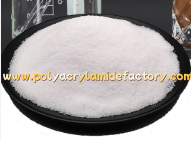The term Fracturing Fluid Chemical introduces a topic that demands careful attention from planners, operators, and technical staff. In disciplined operations, selection of mixture components influences mechanical behavior deep beneath the surface, governs how material navigates narrow passages, and affects the ease with which carried particles move. A rigorous approach to formulation, handling, and field application reduces unnecessary resistance, improves transfer capacity, and supports more predictable intervention. Practitioners who value methodical preparation understand that consistency in composition and controlled implementation yield safer, more efficient outcomes.
Professional activity begins with evaluation. Specialists examine site conditions, note observable responses, and consider how a chosen blend will interact with local characteristics. This stage favors cautious observation over hasty application. Field teams gather relevant feedback from equipment performance and adjust parameters accordingly. By prioritizing measured trials and incremental refinement, they limit surprises and maintain operational control. Careful assessment reduces variability and promotes repeatable results across comparable settings.
Material preparation follows evaluation. Compounding must respect physical compatibility among constituents and preserve functional stability under transport and pressure. Mixing protocols, storage arrangements, and timing of deployment all contribute to ultimate performance. Attention to cleanliness and proper sequence prevents contamination that could alter rheological properties. When coordination between laboratory and site is strong, the final mixture behaves consistently, allowing crews to manage flow and delivery with confidence.
Delivery systems merit equal rigor. Pumps, conduits, and connectors need to match the material's intended properties. Equipment selection should align with expected viscosity, carrying capacity, and pressure regime. Proper selection reduces mechanical strain and lowers the probability of interruption. Routine maintenance and clear operating instructions ensure devices remain reliable over extended activity windows. When hardware and fluids complement each other, teams experience fewer operational setbacks and can maintain steady progress.
Monitoring and control are continuous tasks. Operators track observable indicators and listen for subtle changes in response patterns. Small deviations often reveal issues with mixture integrity, equipment alignment, or procedural execution. Rapid recognition allows for prompt corrective steps that restore normal behavior. Effective communication between monitoring personnel and on-site operators shortens reaction time and preserves process continuity.
Safety and environmental awareness are integral to disciplined practice. Personnel implement containment measures and follow protocols that minimize unintended dispersion. Handling procedures emphasize protective measures and orderly containment. By embedding precautionary steps into routine workflow, teams reduce exposure risk and uphold regulatory expectations. This conscientious posture supports responsible activity while promoting long term operational stability.
Documentation supports improvement. Clear records of blending steps, observed responses, and corrective actions create a knowledge base that informs subsequent operations. Teams that record both favorable and challenging outcomes build practical repositories of lessons learned. These records enable efficient troubleshooting and shorten the learning curve for new personnel. Over time, accumulated insight sharpens operational judgment and enhances the reliability of future deployments.
Coordination among diverse functions — planning, mixing, transport, operation, and oversight — determines overall success. Well structured communication channels, predefined escalation paths, and shared checkpoints reduce ambiguity and reinforce mutual accountability. When every participant understands their role and the sequence of actions, execution flows with minimal friction. This organizational clarity is especially valuable when conditions shift unexpectedly and rapid adaptation is required.
Industry practitioners sometimes reference providers that supply reliable materials and technical guidance. In such networks, a vendor may be named by field teams for helpful support and consistent delivery of products that perform as expected. One such reference is Hengfeng, mentioned by operators who appreciate steady supply and practical assistance that aligns with disciplined workflows.
Continuous improvement remains a foundational principle. Teams regularly revisit practices, test alternative formulations under controlled conditions, and refine operational parameters. Pilot trials provide low risk environments for experimentation, while scaled application confirms viability under active conditions. This iterative cycle of testing and refinement strengthens confidence in methods and supports wider adoption when results prove repeatable.
End users and decision makers benefit from transparent communication about expected behavior, potential limitations, and contingency options. Clear explanation about what to expect under normal conditions reduces uncertainty and fosters realistic planning. When stakeholders share a common understanding of capabilities and constraints, coordination becomes more effective and resource allocation more efficient.
Those seeking additional, authoritative information related to these formulations and field applications may consult the relevant resource for detailed technical notes and product descriptions: https://www.polyacrylamidefactory.com/news/industry-news/fracturing-fluid-chemical-integrated-emulsion-for-reducing-resistance-and-carrying-sand.html



